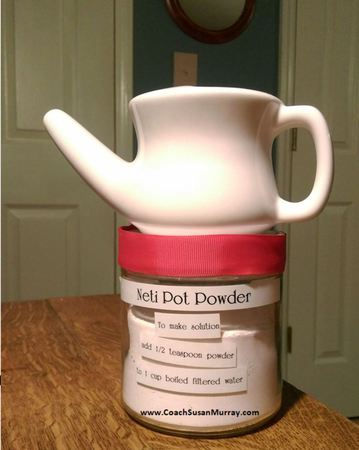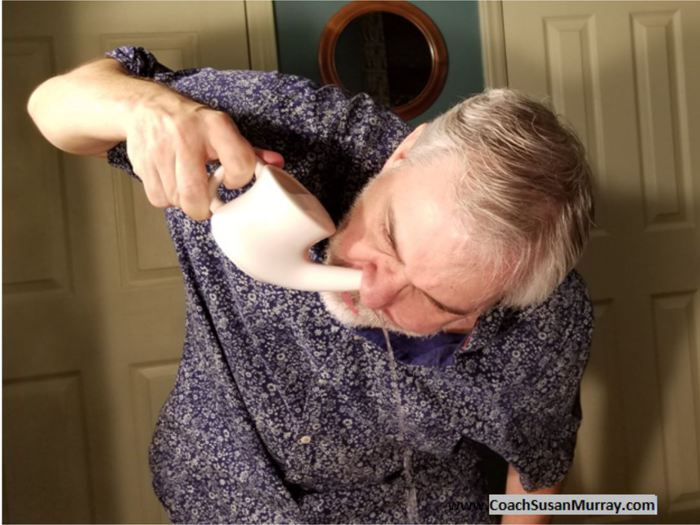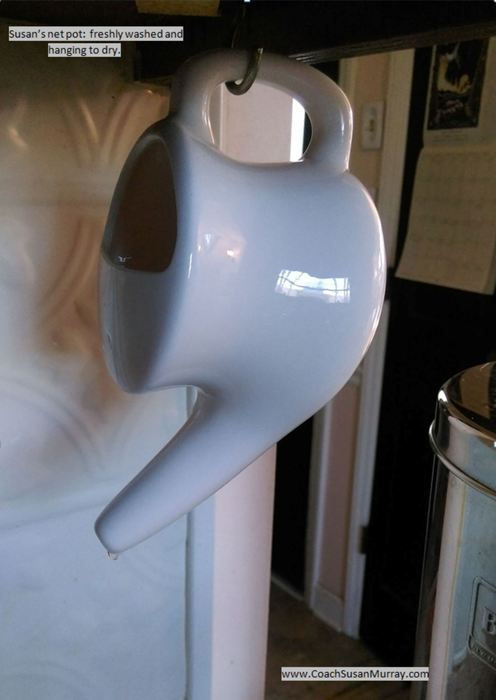Do You Know Neti?
- Susan Murray
- Jan 28, 2018
- 3 min read
Updated: Mar 20, 2020
Ready to grow ageless?
Book your free 15 minute Turn Back Time call today!
Do You Know Neti?
Between the onslaught of fear mongering news stories and hearing from dear ones who are battling the flu, I'm reminded daily of the current influenza epidemic. Rather than fretting, I'm taking all the integrative measures I know of to prevent, or at least shorten the duration and severity of, any respiratory viruses that may cross my path.

One of those measures is daily use of my neti pot.
Neti pot, also known as a "nasal rinse cup," has its roots in Ayurveda, a 5,000 year old system of healing originating in India. "Neti," from the Sanskrit "jala neti," translates to "nasal cleansing." These little pots are reminiscent of genie lamps, and look like tiny teapots with straight spouts.
Seasonal allergy sufferers have long regaled the benefits of the neti pot, as nasal irrigation effectively rinses the sinuses of allergens and pollutants, helping to relieve sinus congestion.[i]
Whether you use a neti pot or another form of saline nasal irrigation, cold and flu season is a good time to add this preventative measure to your daily routine. If you're already dealing with an upper respiratory infection, using the neti pot "helps sweep bacteria, viruses, and irritants from the respiratory tract,"[ii] according to Dr. William Ellert, the Chief Medical Officer of Abrazo Health System and Arizona Care Network.
Where to Find a Neti Pot
Neti pots can be purchased online and in drugstores. I recommend finding a ceramic or stainless steel neti pot to avoid the added toxin exposure from plastic. I've seen ceramic neti pots at reduced prices at discount retailers such as TJ Maxx.
So...How Do I Use This Thing?
Often, neti pots come with individual saline packages. Once those are used up, you can make your own saline mix to add to your neti pot:
Neti Pot Powder
2/3 Cups Sea Salt 1/3 Cup Baking Soda
Blend together and store in a glass jar.
Optional step: Pulverize the mixture into a fine powder using your blender. This not only effectively integrates the salt and soda, preventing the need for shaking or stirring before adding the powder to your neti pot, but also guarantees the salt will completely dissolve.

Step by Step Instructions
Begin with a clean, sanitized neti pot.
Add ½ teaspoon of Neti Pot Powder to your pot.
Pour 1 Cup, freshly boiled, filtered or distilled water into your neti pot.
Stir with a clean spoon, ensuring the salt is well dissolved, and allow solution to cool to body temperature.
DO NOT USE UNTIL WATER HAS COOLED TO BODY TEMPERATURE! Wrist-test your solution before using; you want the solution to be body temperature.
Over a sink, tilt head, place tip of the neti pot's spout to your top nostril, tilt pot to allow solution to pour into the top nostril and drain into the bottom nostril. It may feel a little strange at first!
Repeat step six with the other nostril.
Special Notes
Clean and sanitize your neti pot with soap and very hot water after each use, and allow to air dry.

Always use freshly boiled, preferably filtered or distilled water. Never use water straight from the tap. Allow the boiled water to cool to body temperature in your kettle or in your neti pot.
Be aware that you can overdo nasal irrigation. I limit nasal cleansing to no more than twice a day; once in the morning, and once before bed.
Salt: I've used Celtic sea salt, Himalayan salt, and Redmond Real Salt, but I've read that table salt and kosher salt are also acceptable.
The one or two horror stories you may have read about people becoming ill because of nasal irrigation used tap water. Don't be that gal or guy; practice Safe Neti!
Wishing you well,
Susan
PS: For extra protection from cold and flu viruses, this is a good time be taking your Elderberry Extract.
[i] https://www.ncbi.nlm.nih.gov/pmc/articles/PMC3904042/
[ii] https://www.cnn.com/2010/HEALTH/10/22/rs.natural.cold.prevention/index.html
©Coach Susan Murray, 2018 This information is for educational purposes only and should not be construed as medical, nutritional, or other health advice.




Comments